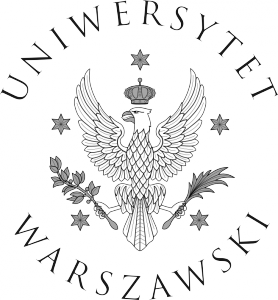Seminarium Wydziałowe 12.09.2018
11 września 2018Dziekan Wydziału Chemii Uniwersytetu Warszawskiego zaprasza na SEMINARIUM WYDZIAŁOWE.
12 września 2018 (środa), o 11:00,
w Sali Starej Biblioteki (I piętro)
Dr. THIERRY DUBROCA
(National High Magnetic Field Laboratory, Tallahassee, USA)
wygłosi wykład
“Dynamic Nuclear Polarization development and applications”
Serdecznie zapraszam Pracowników, Doktorantów i Studentów Wydziału Chemii, oraz inne zainteresowane osoby.
Dr hab. Andrzej Kudelski, prof. UW
Seminarium Wydziałowe 18.09.2018
Dziekan Wydziału Chemii Uniwersytetu Warszawskiego zaprasza na SEMINARIUM WYDZIAŁOWE
18 września 2018 (wtorek), o 15:00,
w Auli C Centrum Nauk Biologiczno-Chemicznych Uniwersytetu Warszawskiego
(ul. Żwirki i Wigury 101)
Prof. ANDRZEJ T. SLOMINSKI
(University of Alabama at Birmingham, USA)
wygłosi wykład
„What is new under the sun: Novel secosteroidogenic and lumisteroidogenic pathways”
Serdecznie zapraszam Pracowników, Doktorantów i Studentów Wydziału Chemii, oraz inne zainteresowane osoby.
Dr hab. Andrzej Kudelski, prof. UW
Abstract:
Several non-canonical secosteroidogenic and lumisteroidogenic pathways have been discovered, which are initiated by the action of CYP11A1 on 7-dehydrocholesterol, vitamins D and lumisterol, and produce hydroxy-secosteroids or -sterols with a full length or shortened side chain. These can be further metabolized by other CYP enzymes or modified by ultraviolet B radiation. The products of these pathways have had their structures determined and they are produced ex-vivo by adrenal glands, placenta, epidermal keratinocytes and dermal fibroblasts, with several being detected in human serum and skin. They display diverse biological activities on various cell types. Importantly, the major hydroxy-vitamin D3 metabolites show anti-proliferative, anti-cancer, anti-inflammatory, anti-fibrinogenic, prodifferentiation and photoprotective properties, without or with only minimal calcemic effects. They act as biased agonists on the vitamin D receptor and as inverse agonists of retinoid-related orphan receptors. These pathways open new perspectives in medicine and biology and can be useful in new therapeutic strategies.

